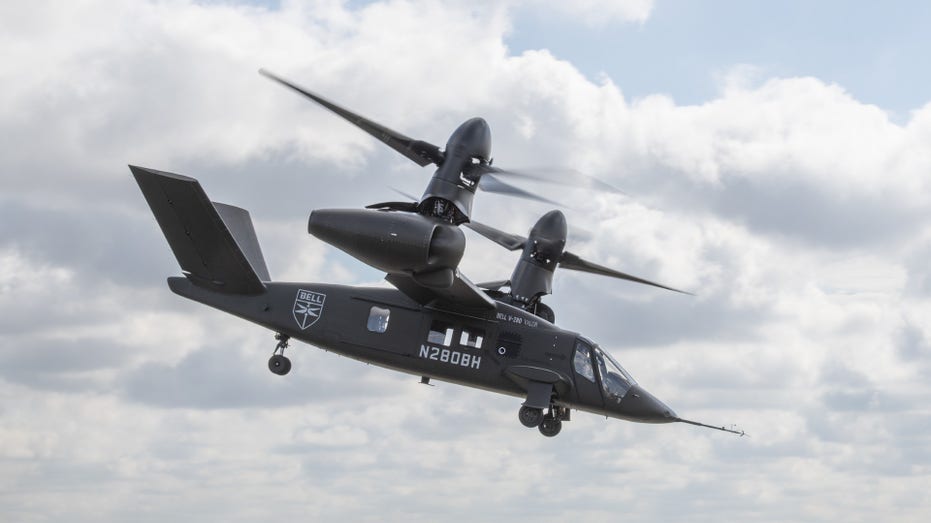WWW.FOXNEWS.COM
Army ditches helicopters for new radical air assault planes
Its a plane. Its a helicopter. Its both. Meet "FLRAA," the Armys new tiltrotor for Future Long-Range Air Assault. This is how the Army will island hop in the Pacific to fend off China. And by the way, Chinese President Xi Jinping has nothing like it.With a stunning announcement, the Army did more than ax 40 generals and open the door to AI. The Army bet its future on this radical aircraft, whose engines swivel to take off and land like a helicopter, or fly high and fast like an airplane.This aircraft was on pace to enter the Army inventory in the early 2030s.PETE HEGSETH SAYS WEST POINT PROFESSOR WHO RESIGNED OVER TRUMP ADMIN EDUCATION OVERHAUL 'WILL NOT BE MISSED'Then came the Army shake-up. On May 1, Secretary of Defense Pete Hegseth directed the Army to focus more on the Indo-Pacific. In that region, sheer distance and Chinese missile threat rings are locking out current helicopters. For the mission of air assault when troops move into hostile and contested areas by rotary-wing aircraft the hard truth is that the Army has a looming capability gap."We can't actually do the large-scale, long-range air assault today" with the speed and distance required in modern warfare, Maj. Gen. Brett Sylvia, commanding general of the 101st Airborne Division (Air Assault) at Fort Campbell, Kentucky, said last year.Thats unacceptable, given Xis growing appetite for military confrontation.So now the Army wants its revolutionary plane ASAP. On Wednesday, May 7, Army Chief of Staff General Randy George told Congress he wants to move it up several years, "into the 2028 timeframe." Secretary of the Army Dan Driscoll said he met with prime contractor Bell Textron to talk about a rush order.Its easy to see why. The acronym-happy Army says "FLRAA" will fly 1,700 nautical miles without refueling and carry 12 passengers at a speed near 300 mph. Compare that to the 183 mph for the Black Hawk helicopter it is replacing. For pilots, the extra range, speed and survivability of a tiltrotor is a huge improvement on a helicopter. With a tiltrotor, they can zoom all over the battlespace with impunity and land any time, any place, in any conditions.You may be familiar with the V-22 Osprey, which first flew in 1989 and is now flown by the Marine Corps, Navy and U.S. Air Force special operations forces. As the first operational tiltrotor, the V-22 has had ups and downs, but beyond question, the V-22 proved itself in combat in Afghanistan. In another vivid example, in 2013, three battle-damaged Air Force MV-22s flew 500 miles from South Sudan to Entebbe, Uganda, spewing fuel, to save the lives of wounded Navy SEALs aboard.No wonder the Army pounced on the tiltrotor concept.However, the Army FLRAA is an all-new design based on the prototype V-280 Valor, which first flew in 2017. It is slightly smaller than the V-22, with a 47-foot fuselage consisting of an aluminum structure and carbon fiber composite skin.CLICK HERE FOR MORE FOX NEWS OPINIONThe big advance for "FLRAA" is in the tilt mechanism. On the older V-22, the whole engine nacelle housing pivoted. For the Armys aircraft, that headache is gone. The two engine nacelles stay put on the wing. Only the propellors rotate, to switch between helicopter and airplane mode. This is much safer, and the improved rotor design also increases agility and maneuverability in low-speed flight while in helicopter mode.The other major difference is that the Armys tiltrotor is designed as a multi-mission aircraft. Door guns on each side mark it as a dedicated air assault platform. Contrast that with the V-22 which only has a tail gun. The new Army tiltrotor also carries so-called "launched effects," which is military lingo for a variety of drones, such as self-protection decoys released to divert enemy fire, sensor drones to hunt targets, drones that do electronic warfare jamming and of course weapons drones for the kill.With its range capability, the Army tiltrotor can drive these drones deep into the battlespace. With drone operations in mind, software matters, so the plane has an open systems digital backbone ready to plug in new systems anytime.Even more intriguing, the FLRAA has the potential to fly by itself. At 240 knots it can deploy from Hawaii to the Philippines in 20 hours. In the future, "FLRAA" may also be able to self-deploy, moving to the theater by flying autonomously as an unmanned aircraft and rejoining with crews at a forward location.The Army sees the Pacific islands like a chessboard. If China threatens, the tiltrotor "FLRAA" can move soldiers rapidly to land in contested areas and block Chinese forces from taking over.Now the Army just needs to give its radical new plane a proper name.CLICK HERE TO READ MORE FROM REBECCA GRANT






